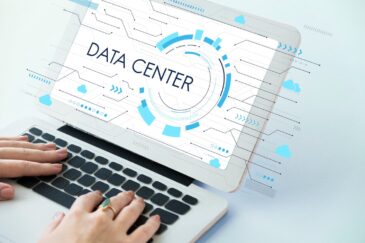Understanding the Differences Between Data Synchronization and Data Replication

- December 22, 2022
- Jhansi Rani
- 0
Data Synchronization
There are several ways to achieve data synchronization. One standard method is to use a central server to store the data and have all other systems connect to the server to access and update the data. This ensures that all devices work with the latest version of data. Another approach is peer-to-peer synchronization, in which each device or system keeps its copy of the data and exchanges updates with other devices directly. It can be helpful when a central server is unavailable, but it can be more complex to set up and manage.
There are also a variety of software tools and services available that can help with data synchronization. These tools can automate keeping data up to date and provide features such as conflict resolution, version control, and backup and recovery. Data synchronization is essential when multiple people or systems need to access and update the same data, helping prevent issues when working with out-of-date or conflicting data.
Data Replication
Data replication creates copies of data and stores them in multiple locations. It can improve data availability and reliability, enable faster access, and protect against data loss or damage. There are several types of data replication, including:
Full Replication
In full replication, all data is copied to all locations. It ensures that data is always available and can be accessed from any location, but it can be inefficient if the data set is large or changes frequently.
Partial Replication
In partial replication, only a subset of the data is copied to each location. It reduces the data to be copied and stored, but it can be more difficult to access specific data if it is not replicated in the required location.
Incremental Replication
In incremental replication, only changes to the data are replicated, rather than the entire data set. This approach is more efficient when dealing with large data sets that change frequently, but it can be more complex to implement and manage.
Data replication can be achieved using techniques like a central server to store the data and connect other systems or peer-to-peer synchronization to exchange updates directly between systems. Several tools can help with data replication, including database replication tools and data backup and recovery software.
Data replication is vital in situations where data availability and reliability are essential. By creating copies of data and storing them in multiple locations, organizations can ensure that their data is always available and accessible from any location and can protect against data loss or damage.
Data Synchronization vs. Data Replication
Data synchronization and data replication are related but distinct concepts. Data synchronization ensures that data stored in multiple locations is consistent and up to date. This typically involves exchanging real-time updates between devices or systems so that all devices work with the most current data version. Data replication, however, involves creating copies of data and storing them in multiple locations. Data synchronization can be achieved using data replication, but data replication does not necessarily involve data synchronization.
Data Sync Tools
File sync tools
They can help synchronize files between different devices or systems. They can be used to keep files up to date on multiple devices or back them up to the cloud or any other remote location.
Cloud Sync Tools
They help synchronize data between devices and a cloud storage service. They can be used to keep data up to date on all devices or to back up data to the cloud.
Database Sync Tools
These tools help synchronize data between different databases. They can be used to keep multiple copies of a database up to date or to replicate data between databases for backup or other purposes.
Mobile sync tools
These tools help synchronize data between mobile devices like smartphones and tablets. They can be used to keep data up to date on multiple devices or back up to a cloud service or other remote location.
Data sync tools ensure that their data is consistent and up to date across multiple devices or systems. By automating the synchronization process, these tools can help avoid misunderstandings, errors, and other issues when working with out-of-date or conflicting data.

Services
Products
Company
Copyright © 2024 Rite Software Solutions & Services LLC. All rights reserved.



